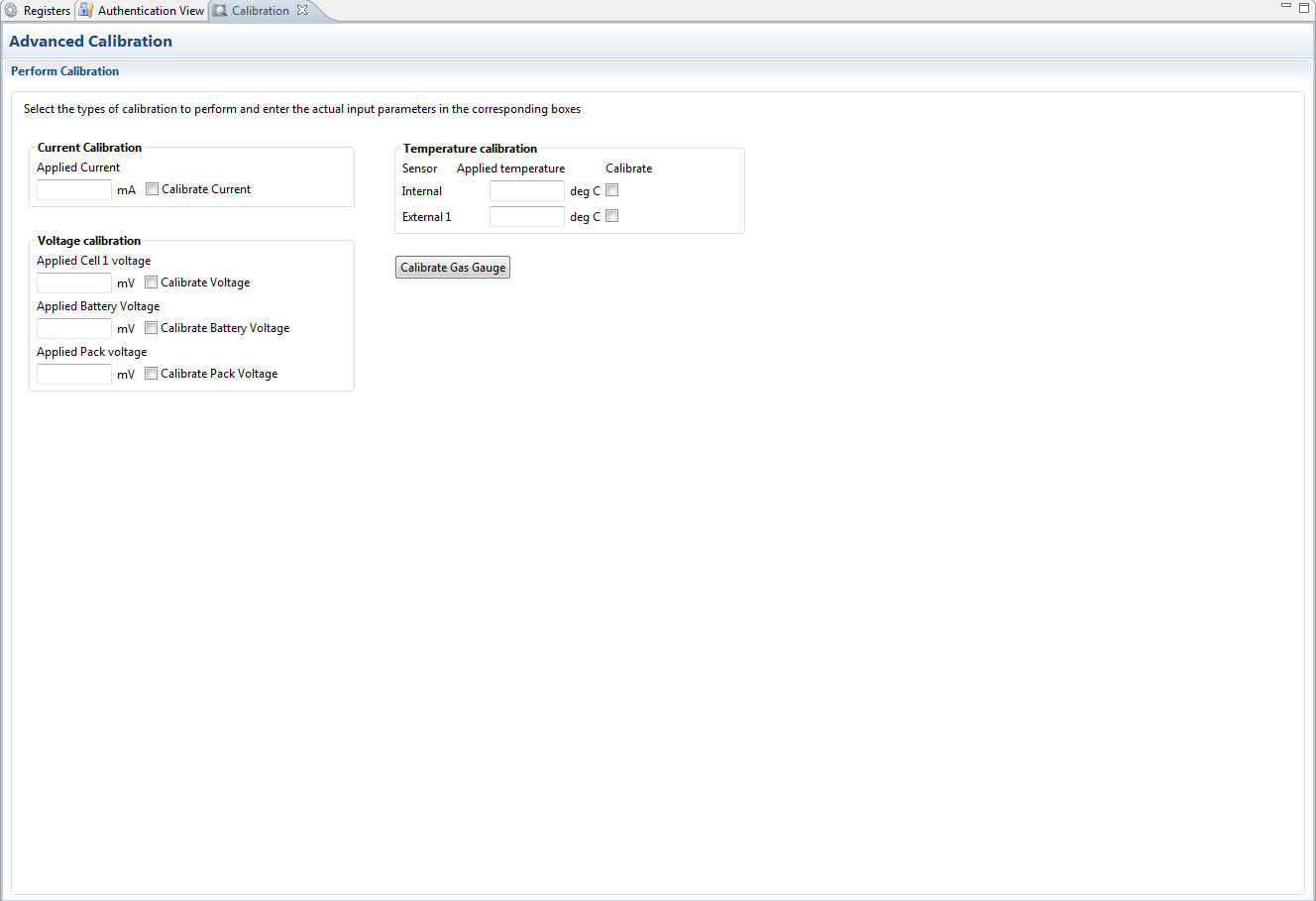SLUUCQ5 March 2023 BQ28Z620
-
1BQ28Z620EVM 1- to 2-Series Li-Ion Battery Pack Manager Evaluation Module
- 1.1 Features
- 1.2 BQ28Z620EVM Quick Start Guide
- 1.3 Battery Management Studio
- 1.4 Circuit Module Physical Layouts and Bill of Materials
- 2Revision History
1.3.4 Calibration Screen
The voltages, temperatures, and currents should be calibrated to provide good gauging performance. Press the Calibration button while in the “Show Advanced view mode” to select the Advanced Calibration window. See Figure 1-6. If in the “Show basic view mode”, the basic calibration window shows when the Calibration button is clicked. The Advanced Calibration window enables the internal temperature sensor as well as the external thermistor to be calibrated.
Note:
For best results, please use a power supply with a 1mV and 1mA accuracy.
 Figure 1-6 Calibration Screen
Figure 1-6 Calibration Screen